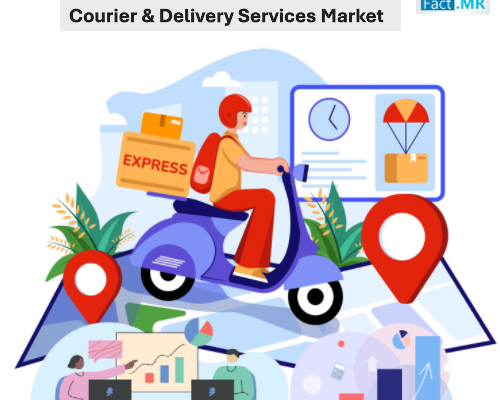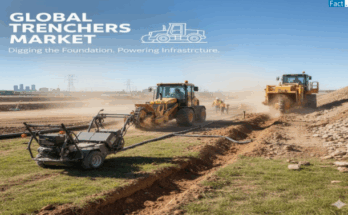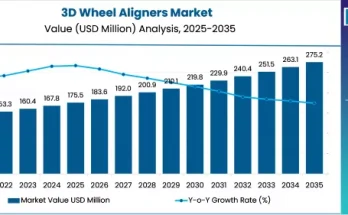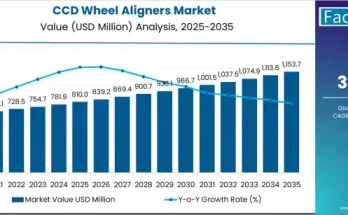The courier and delivery services market is undergoing a significant transformation, driven by the surge in e-commerce, technological advancements, and evolving consumer expectations. As businesses and consumers increasingly demand faster, more reliable, and transparent delivery solutions, the industry is poised for substantial growth over the next decade.
Courier and Delivery Services Market Overview:
Courier and delivery services encompass the transportation of packages, documents, and goods from one location to another, catering to both individual consumers and businesses. The market is segmented into various services, including surface couriers, air transit, express deliveries, and last-mile solutions. The integration of advanced technologies such as real-time tracking, automated sorting, and route optimization has enhanced operational efficiency, reduced delivery times, and improved customer satisfaction.
Regional Insights:
North America:
North America remains a dominant player in the courier and delivery services market, attributed to the high penetration of e-commerce and the demand for rapid delivery options. Major companies like FedEx, UPS, and Amazon are continuously expanding their delivery networks to meet the growing need for same-day and next-day deliveries. The adoption of technologies such as GPS tracking and route optimization tools has further streamlined operations in the region.
The Asia-Pacific region is witnessing rapid growth in the courier and delivery services sector, fueled by the rising number of online shopping platforms and increasing consumer demand for quick delivery options. Countries like South Korea are experiencing a surge in delivery applications that offer real-time tracking, seamless payment processes, and quick booking features, making them popular among both individuals and businesses.
Europe:
Europe is focusing on sustainable and efficient last-mile delivery solutions, driven by environmental concerns and stringent regulations. Companies are investing in eco-friendly practices, such as electric vehicles and optimized delivery routes, to reduce their carbon footprint and meet consumer expectations for green logistics.
| Report Attribute | Details |
| Estimated Market Size (2024) | US$ 507.39 Billion |
| Projected Market Value (2034) | US$ 895.23 Billion |
| Expected CAGR (2024–2034) | 5.8% |
Courier and Delivery Services Market Key Trends & Forecast:
Technological Advancements: The integration of artificial intelligence, machine learning, and automation is revolutionizing the courier and delivery services industry. These technologies enable predictive analytics, real-time tracking, and efficient route planning, enhancing overall service quality.
Drone Deliveries: Innovations in drone technology are paving the way for faster and more efficient last-mile deliveries. Companies are exploring drone-based delivery systems to overcome traffic congestion and reduce delivery times, especially in urban areas.
Sustainability Initiatives: With growing environmental awareness, courier and delivery service providers are adopting sustainable practices, including the use of electric vehicles, biodegradable packaging, and energy-efficient warehouses, to minimize their environmental impact.
E-commerce Growth: The continuous expansion of the e-commerce sector is a significant driver for the courier and delivery services market. The increasing demand for quick and reliable delivery options is prompting companies to enhance their logistics capabilities and offer flexible delivery solutions.
Applications & End-Use Outlook:
Courier and delivery services are essential across various industries, including:
- Retail and E-commerce: The surge in online shopping has led to increased demand for efficient delivery services to ensure timely and accurate order fulfillment.
- Healthcare: The need for prompt delivery of medical supplies, pharmaceuticals, and laboratory samples necessitates reliable courier services with specialized handling capabilities.
- Manufacturing and Industrial: Timely delivery of components and raw materials is crucial for maintaining production schedules and supply chain efficiency.
- Financial Services: Secure and rapid delivery of sensitive documents and contracts is vital for the financial sector, requiring trusted courier solutions.
Competitive Landscape:
The courier and delivery services market is highly competitive and fragmented, with a mix of global giants and regional players striving to gain market share. Key players such as FedEx Corporation, United Parcel Service (UPS), DHL Express, SF Express, and Aramex dominate the global landscape, leveraging their expansive logistics networks, technological capabilities, and strong brand recognition.
In addition to the established players, new entrants and startups are disrupting the market with innovative business models focused on hyperlocal deliveries, app-based logistics, and gig-economy courier solutions. These emerging players are especially prominent in urban centers, offering fast, affordable, and often more environmentally friendly alternatives.
To remain competitive, major companies are:
Investing in automation and robotics to streamline warehouse operations.
- Expanding last-mile delivery solutions using electric vehicles and alternative transport methods like bicycles and drones.
- Partnering with e-commerce platforms to integrate logistics services and ensure end-to-end delivery efficiency.
- Utilizing big data and AI for demand forecasting, dynamic route planning, and inventory management.
Market Drivers:
Several core factors are fueling the growth of the courier and delivery services market:
- E-commerce Expansion: Online retail has revolutionized consumer buying behavior. The convenience of shopping from home, coupled with attractive pricing and return policies, has led to a sharp increase in parcel volumes. This trend is particularly pronounced in developing economies where digital adoption is rapidly rising.
- Consumer Expectations: Modern consumers expect transparency, speed, and flexibility. Features like same-day delivery, real-time tracking, and contactless delivery are no longer luxuries—they are becoming standard. This pressure pushes logistics providers to innovate and enhance customer experience.
- Urbanization and Smart Cities: As more people move to cities, urban logistics is becoming a focal point. Smart city initiatives are influencing delivery infrastructure through smart traffic systems, automated lockers, and shared distribution hubs. Courier services are adjusting operations to meet the unique needs of densely populated urban environments.
- Rise of Subscription Models: Subscription-based e-commerce (e.g., meal kits, fashion, health products) has spurred demand for consistent and timely deliveries. Courier companies are tailoring services to accommodate recurring shipments, often with optimized scheduling and personalized delivery windows.
Challenges:
Despite strong growth prospects, the courier and delivery services market faces several challenges:
- Rising Operational Costs: Fuel prices, labor costs, and infrastructure investments are steadily increasing. While technology helps mitigate some expenses, maintaining profitability while ensuring timely service remains a balancing act.
- Last-Mile Delivery Complexity: Last-mile delivery accounts for a significant portion of total shipping costs. Traffic congestion, route inefficiencies, and failed deliveries can increase expenses and negatively impact customer satisfaction.
- Environmental Impact: The surge in delivery volumes contributes to carbon emissions, particularly in urban areas. Regulatory pressures and consumer demand for sustainable practices are pushing companies to rethink their fleet management, packaging, and overall environmental strategy.
- Data Security and Privacy
As courier services become more tech-driven, handling sensitive customer data and shipment information poses cybersecurity risks. Providers must implement robust data protection systems to build trust and avoid legal repercussions.
Conclusion:
The courier and delivery services market is poised for significant growth, driven by technological innovations, the expansion of e-commerce, and the increasing demand for efficient logistics solutions. As the industry evolves, companies that embrace advanced technologies, sustainable practices, and customer-centric approaches will be well-positioned to thrive in the competitive landscape. Staying informed through comprehensive market analyses can guide organizations in making strategic decisions to capitalize on emerging opportunities in the courier and delivery services sector.



